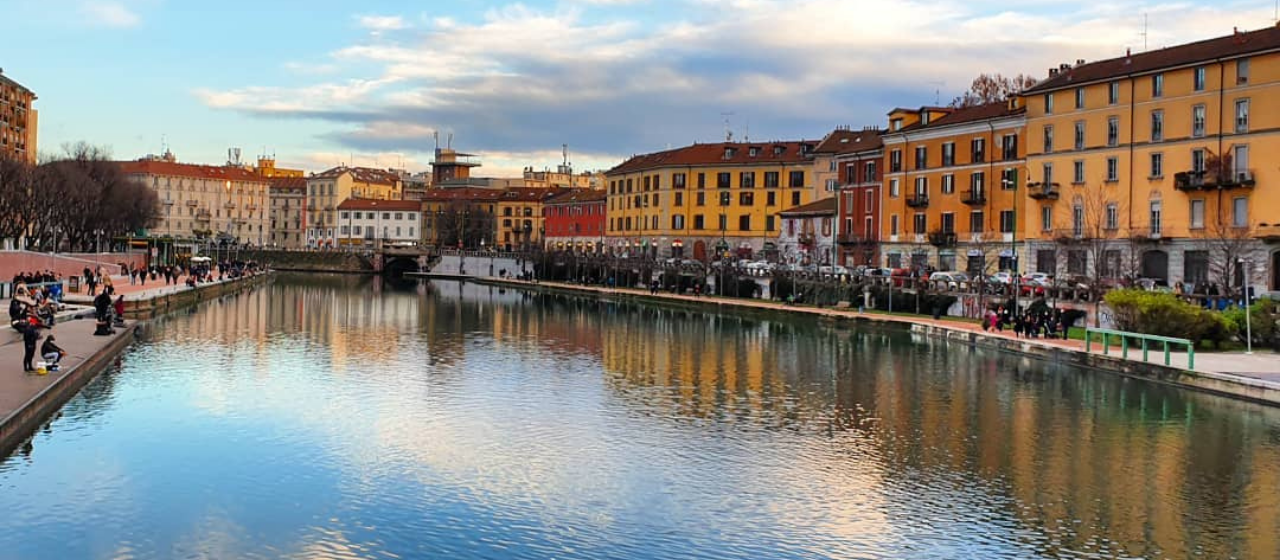YESMILANO WIRE, UPDATE MARCH 1ST 2021
This week: Milano, the Italian Manhattan; automotive alternatives; contemporary architecture

Every week, three news items on the upcoming future of Milano and its metro community.
According to Brigitte, Germany's most popular women magazine, Milan is a city full of energy, where there is always something new happening despite the pandemic. According to the magazine, it is the only place in Italy driven by the concept of the future. A trajectory of renewal on the long wave of Expo, which has restored energy to the whole city: "In all street corners something new is created and conceived, unused land is regenerated, and new neighborhoods are born. Milan can no longer compared to the rest of Italy, but to London, Amsterdam or Hong Kong. Milan wants to become a smart city, plant 3 million trees in the next decade and transform its city center into the largest no-car zone in Europe. Milan's pace is only comparable to New York's". The author of the article, Annette Rübesamen, was conquered by the Triennale and Fondazione Prada, and believes the city is an ideal destination for tourists having multiple interests, and in terms of art, culture, fashion, design or gastronomy, Milan satisfies every palate and need.
According to the German daily Süddeutsche Zeitung (SZ), one of the effects of the pandemic has been a spike in car usage in large cities. Fear of contagion has prompted an increasing number of Germans to resort to private motor vehicles for their mobility. For the Munich-based newspaper, this trend must be stopped due to the negative effects on air quality and the strategy of reduction in climate-altering emissions. German cities must therefore learn from the environmental transition of Milan (and London and Paris) and implement measures to avoid the use of private cars, seen by too many commuters as a safer alternative in times of Covid. It is much healthier and sustainable to encourage mobility by bike or on foot, as the Municipality of Milan has done with the creation of additional networks of bike lanes and no-car and reduced speed zones throughout the city, part of the broader strategy of redesigning Milano starting from local neighborhoods and proximity services.
The US financial TV report tells of the redevelopment in an eco-sustainable direction of Pirelli 39 skyscraper, familiarly known as the Pirellino. Entrusted by the real estate company COIMA to the Boeri architecture firm working jointly with Diller Scofidio + Renfro, the project involves modernization of the existing structure and construction of a new residential tower, entirely covered by 1,700 square meters of vegetation. The flora of the building will absorb 14 tons of CO2 every year, while generating 9 tons of oxygen. The intent is to replicate the international success achieved by the iconic Bosco Verticale (Vertical Forest) in the adjacent Isola neighborhood. The redevelopment of the Via Gioia area will further enrich Milano's skyline, revolutionized over the last ten years, and secure Milano's standing in world architecture.
In CNBC's words: "From its cavernous medieval cathedral to the elegant beauty of La Scala, the Italian city of Milan is home to some of the world’s most interesting buildings. While the aforementioned structures date back hundreds of years — La Scala was inaugurated in 1778 and work began on the cathedral in the late 14th century — Milan also boasts a broad range of modern architecture. These include towering skyscrapers serving major firms such as UniCredit and Allianz as well as the iconic San Siro soccer stadium." The financial newscaster goes on to note how not only the Municipality of Milan, but also London, Paris, NYC and Madrid are fostering projects to cover buildings in chlorophyll, so as to improve air quality and reduce emissions.

 Log in
Log in